Feature: Five generations of Ford Mustang
Story by John LeBlanc
Surviving a half-century in new car showrooms is quite an accomplishment. That’s exactly what Ford will be celebrating in April 2014 with the introduction of its new, sixth-generation 2+2 coupe. To put the forthcoming 2015 Mustang into perspective, here’s a look back at the previous five generations of a true American automotive icon.
First-generation: 1964 to 1973
Debuting on April 17, 1964, with virtually no competition, Ford projected sales of less than 100,000 annually for its new Mustang 2+2 coupe (at the top of this post). But by the end of its first model year, more than 618,000 Mustangs were moved, making it Ford’s most successful launch since the Model A in 1927.
Based on the humble underpinnings of Ford’s rear-wheel-drive Falcon compact, the two-door Mustang was available as a notchback, fastback and convertible. While V6 and V8 models delivered plenty of performance for the street, in 1965 Ford contracted American racer Carroll Shelby to design and build the track-ready Shelby Mustang.
The Mustang’s massive popularity forced domestic rivals to counter with their own “pony cars,” including the Chevrolet Camaro (1966), AMC Javelin, Pontiac Firebird, Mercury Cougar and second-generation Plymouth Barracuda (1967), and Dodge Challenger (1970). Imports also got in the act with Japan’s Toyota Celica (1970) and Ford’s European Capri (1969).
To keep the new competitors at bay, Ford continually offered higher-performing Mustangs with bigger V8s and more power, like the Mach 1, Boss 302/429, and peaking with the 1971 Super Cobra Jet models with 375 hp.
Seminal model: The 1965/66 GT 350 Shelby Mustangs (seen above) shamed much pricier imports on racetracks around the world.
Second-generation: 1974 to 1978
Even before the first Oil Crisis in 1973, Ford was planning to make the all-new 1974 Mustang smaller — much smaller. In 1970, Lee Iacocca, one of the original Ford executives who fathered the first Mustang, asked for a Mustang that would sip less fuel and compete better with new import coupes like the Celica and Capri.
What Iacocca got was the Mustang II, a rear-wheel-drive, subcompact Ford Pinto-based “pony car” in both notch- and hatchback forms (the convertible was dropped in favour of leaky T-tops).
For the first time ever, a V8 engine was not available. Instead, base models came with four cylinders, while the “big” engine was a V6. No matter the lack of performance, with the Oil Crisis at its peak buyers flocked into Ford dealerships. Sales for 1974 were nearly 300,000 units, or three times that of the bloated 1973 Mustangs.
For 1975, Ford wedged a 5.0-litre eight-cylinder engine into the Mustang II’s engine bay. But with only 140 horsepower, it paled in comparison to the ‘Stangs from the late-1960s. Instead of real performance, Ford rolled out “tape and decal” specials, like the Stallion, Cobra II and King Cobra models.
Seminal model: The 1976 Ford Mustang II Cobra II (seen above) driven by Farrah Fawcett’s Jill Munroe character on TV’s Charlie’s Angels.
Third-generation: 1979 to 1993
Driven by a better aerodynamic shape for improved fuel economy and a nod to more sophisticated import rivals, the third-generation Mustang was a quantum leap in regards to ride quality, handling and packaging over the Mustang II.
Using Ford’s rear-wheel drive Fox platform (first seen on the 1978 Ford Fairmont sedan), the third-generation Mustang (in notchback, hatchback and convertible forms) was larger and offered more interior room than the previous Pinto-based model.
The 1979 Mustang used carryover four-, six- and eight-cylinder engines. A new 132 hp 2.3-litre turbocharged four-cylinder was introduced later in the year. Amid a second Oil Crisis in 1979, Ford replaced the 5.0L V8 with a debored 4.2 unit for 1980. Horsepower dropped to 120 hp — the lowest ever in a V8 Mustang.
In 1982, Ford reintroduced the 5.0L V8, now with 157 hp. And in direct response to sporty European coupes like the BMW M3, Ford launched the Mustang SVO in 1984, using a 175 hp version of the turbo-four.
A significant side story in this generation of Ford’s pony car was the near-death of the rear-wheel-drive Mustang. In the early 1980s, buyers were moving quickly to front-wheel-drive import coupes like the Toyota Celica and Honda Prelude, while Mustang sales were dramatically slowing.
In response, Ford announced the 1989 Mustang would share its platform with the front-wheel-drive Mazda MX-6. But a groundswell of backlash from the Mustang faithful forced the automaker to change its plans at the last minute, resulting in the Mazda-based Mustang becoming the Ford Probe.
Seminal model: Under the newly established Ford SVT division, the 1993 Ford Mustang SVT Cobra (seen above) was offered with a 235 hp V8.
Fourth-generation 1994 to 2004
After surviving three decades of threats from government regulations, import rivals and changing demographics, Mustang was more established than ever. And Ford’s “don’t mess with success” attitude led to only a major refresh of the existing model’s Fox-based platform that had been used since 1979.
Dropping the hatchback model, the fourth-generation Mustang came as a coupe or convertible only. With improved fuel economy, Ford could get away without offering a four-cylinder engine option. A 145-horsepower V6 served as the base engine with Ford offering an optional 215 hp 5.0 V8 (which would be replaced by Ford’s so-called “modular” 4.6 L eight in 1996).
For 1999, Ford gave the Mustang sharper styling, inspired by the 1995 Ford GT90 show car. On top of the GT model, special editions started to make a comeback as well, with the 1999 320 hp Cobra, 2001 Bullitt inspired by the 1968 Steve McQueen movie of the same name and the 2003 Mach 1.
Seminal model: The 2001 Ford Mustang Bullitt (seen above), modeled after the 1968 390 fastback model used in the 1968 film Bullitt, was one of the best handling Mustangs ever.
Fifth-generation: 2005 to 2014
With General Motors killing off its Chevrolet Camaro and Pontiac Firebird for 2002, and the Dodge Challenger last seen as a rebadged Mitsubishi in 1983, by 2005, if you wanted an “American” sports coupe, the Ford Mustang was your only choice. Riding on that exclusivity, Ford gave the Mustang its first new platform in 15 years, shared with the Lincoln LS/Jaguar S-Type and Ford Thunderbird.
While V6 and V8 models continued, 2006 marked the return of Carroll Shelby to the Mustang family, with the limited edition Shelby GT-H — a modern take on the 1966 GT500 once available at Hertz rental counters. The next year, the new Shelby GT500 became a regular production model, sporting a 500 hp 5.4 L supercharged V8. By 2014, it would generate a massive 662 hp.
Seminal model: The 2012 Boss 302 (seen above) was considered as one of the most complete Mustangs ever, compared favourably to the likes of the BMW M3.





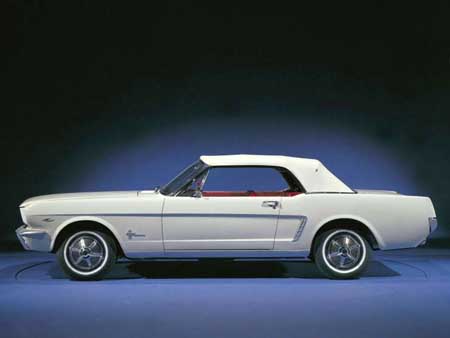
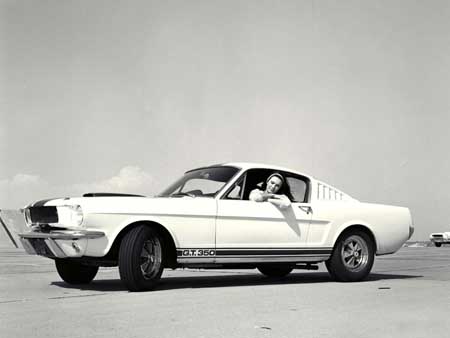
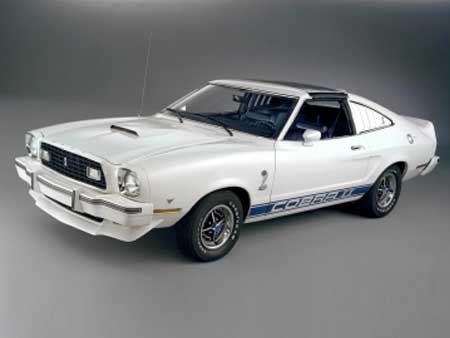
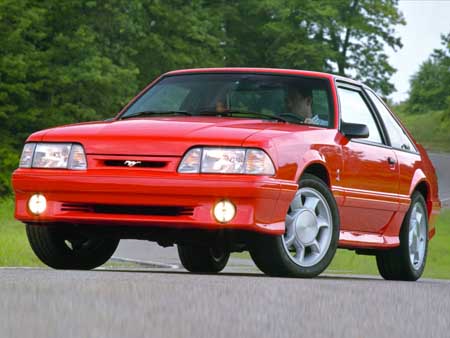
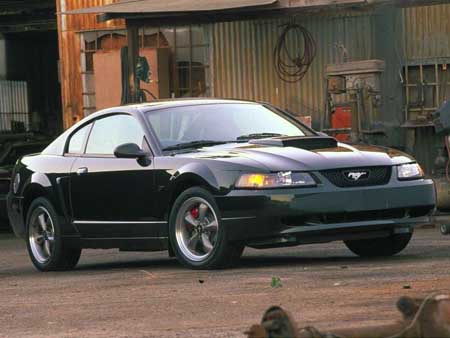

![[del.icio.us]](https://www.straight-six.com/wp-content/plugins/bookmarkify/delicious.png)
![[Digg]](https://www.straight-six.com/wp-content/plugins/bookmarkify/digg.png)
![[Facebook]](https://www.straight-six.com/wp-content/plugins/bookmarkify/facebook.png)
![[Google]](https://www.straight-six.com/wp-content/plugins/bookmarkify/google.png)
![[Reddit]](https://www.straight-six.com/wp-content/plugins/bookmarkify/reddit.png)
![[StumbleUpon]](https://www.straight-six.com/wp-content/plugins/bookmarkify/stumbleupon.png)
![[Twitter]](https://www.straight-six.com/wp-content/plugins/bookmarkify/twitter.png)
![[Email]](https://www.straight-six.com/wp-content/plugins/bookmarkify/email.png)